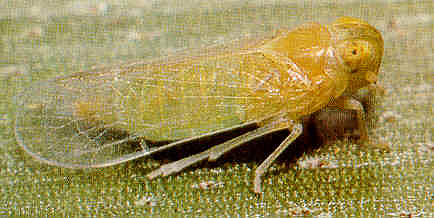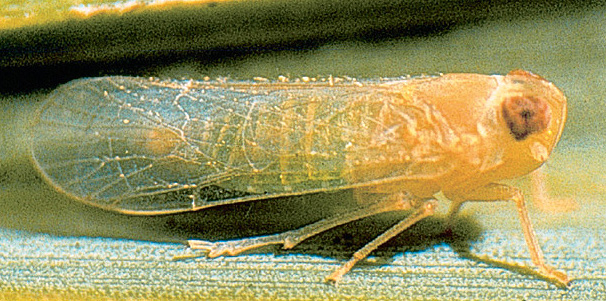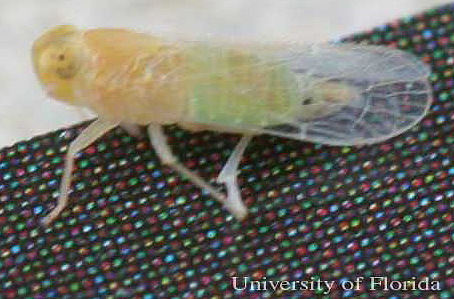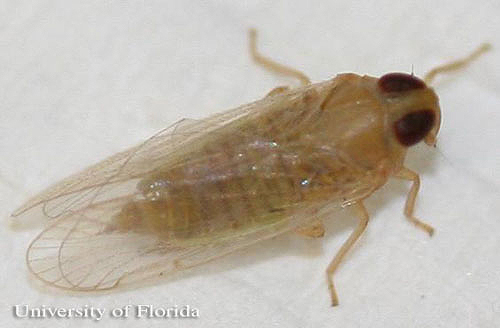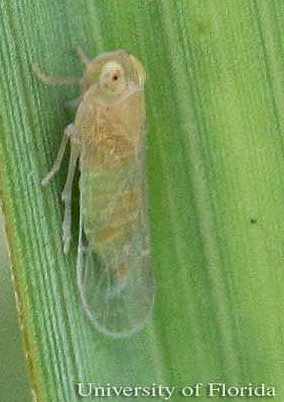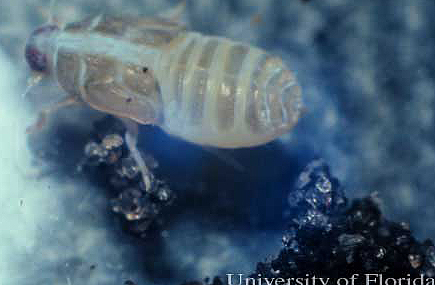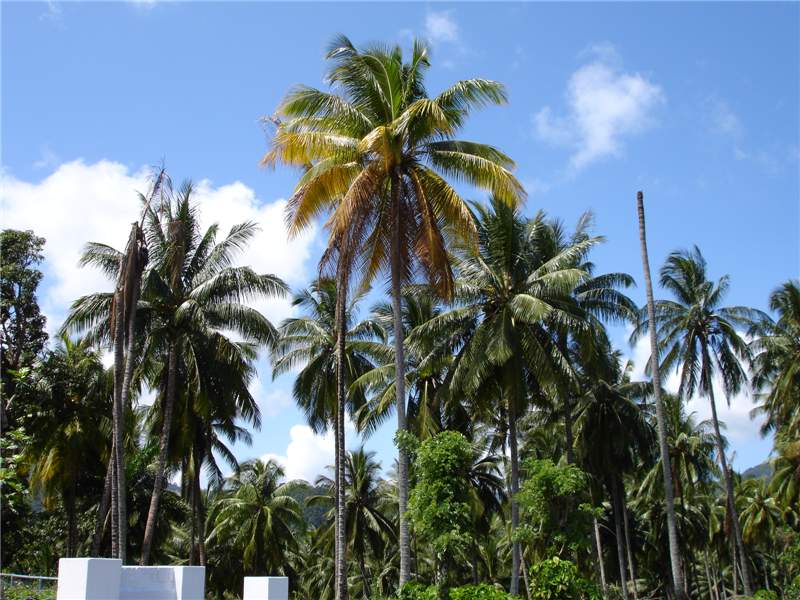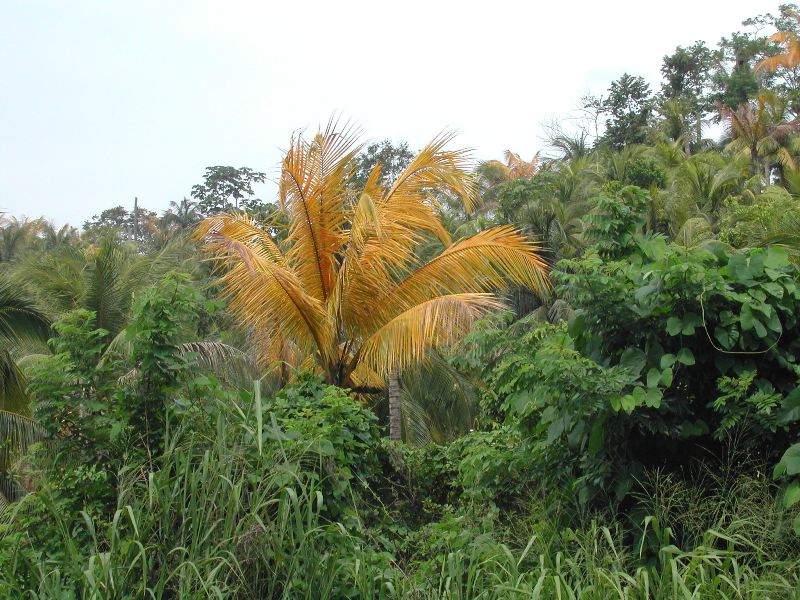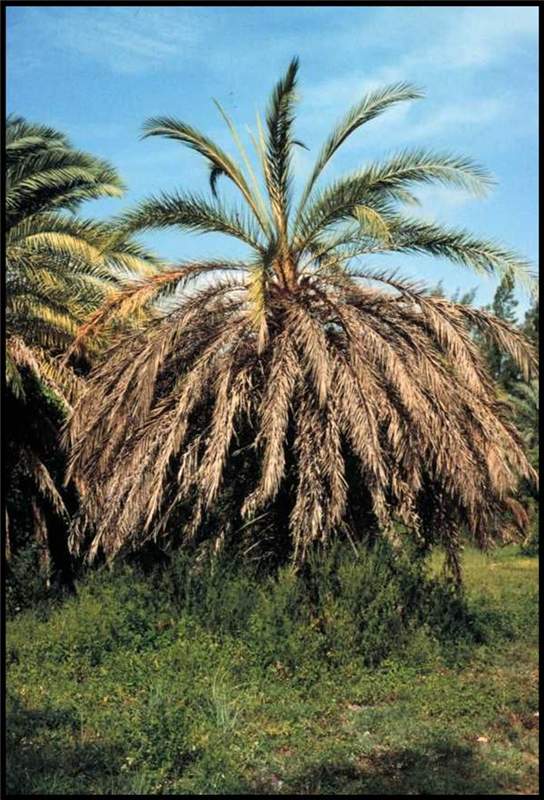American Palm Cixiid
|
adult; Photo courtesy of University of Florida |
|
adult female; Photo courtesy of University of Florida |
|
adult male; Photo courtesy of University of Florida |
|
adult with dark eyes; Photo courtesy of University of Florida |
|
adult with light eyes; Photo courtesy of University of Florida |
|
nymph; Photo courtesy of University of Florida |
|
coconut palms, Cocos nucifera, in various stages of lethal yellowing; Photo by N.A. Harrison, University of Florida |
|
leaf yellowing symptoms of lethal yellowing on coconut palms, Cocos nucifera; Photo by N.A. Harrison, University of Florida |
|
lethal yellowing symptoms in Canary Island date palm, Phoenix canariensis, are reddish-brown, dark brown, or gray leaves rather than yellow; Photo by N.A. Harrison, University of Florida |
Scientific name
Myndus crudus Van Duzee
Family
Cixiidae (Suborder Auchenorrhyncha, Superfamily Fulgoroidea)
Synonyms
Myndus cocois (Fennah), Haplaxius crudus (Van Duzee)
Description
Adult: Length 4.2 to 5.1 mm; head and thorax are pale-brown (straw-colored), abdomen light green; forewings are hyalinehyaline:
glassy and translucent
with pale or light-brown veins, not reticulatereticulate:
net-like
, membranous throughout, at rest forewings overlap; hindwings membranous and smaller than forewings; antennae consists of a barrel-like basalbasal:
at the base of a structure
segment bearing a seta-like flagellum, arising on sides of head beneath eyes, separated from front of head by vertical carinacarina:
a ridge or keel
; spines occur in clusters on the ends of the hind leg segments; three parallel ridges divide the prothorax longitudinally; depending on light conditions, eyes may be straw colored (light eyes) or a deep maroon color (dark eyes).
Nymph: Tan to grey in color with a reddish blush on the head; legs are reddish grading to bright red distally; covered with a thin waxy bloom; tibiae of the forelegs are flattened.
Diagnostic features
Myndus crudus is the only species within the family Cixiidae found on palm foliage in Florida and the Caribbean. Therefore, characteristics of the family will support the identification of this pest. Antennae consists of a barrel-like basalbasal:
at the base of a structure
segment bearing a seta-like flagellum. Spines occur in clusters on the ends of the hind leg sements. There are three parallel ridges that divide the prothorax longitudinally.
Distribution
Florida, Cuba, Cayman Islands, Jamaica, Trinidad, and mainland tropical America from Mexico through northern South America.
Hosts
Palms: Numerous species of palms, but high numbers have been found on Cocos nucifera and Washingtonia robusta. Myndus crudus has been collected from almost all of the species of palms in Florida that are susceptible to lethal yellowing.
Other: The species has been reported on some arborescentarborescent:
having the size, form, or characteristics of a tree; tree-like
monocots.
May be confused with
Cedusa inflata and Omolicna cubana (Derbidae) can be confused with the American palm cixiid, Myndus crudus (Cixiidae). The presence of a short apicalapical:
at the tip of a structure
segment of the rostrum is diagnostic for the two derbid planthoppers.
Additional comments
The adult is the only known insect vector of lethal yellowing (LY), a highly destructive disease of palms in Florida and the Caribbean Basin. Nymphs of this species develop on roots of grasses. Symptoms of lethal yellowing (a phytoplasma) include drying up of developing inflorescences followed by progressive leaf discoloration, beginning with the older leaves and spreading rapidly to the younger ones. The leaves turn light-yellow and eventually orange-yellow.
Also called pallid cane leafhopper.
Species identification requires dissection and examinination of the male genitalia.


